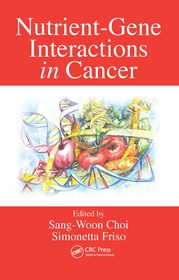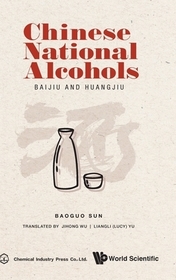
Nutrient-Gene Interactions in Cancer
- Publisher's listprice GBP 61.99
-
29 615 Ft (28 205 Ft + 5% VAT)
The price is estimated because at the time of ordering we do not know what conversion rates will apply to HUF / product currency when the book arrives. In case HUF is weaker, the price increases slightly, in case HUF is stronger, the price goes lower slightly.
- Discount 20% (cc. 5 923 Ft off)
- Discounted price 23 692 Ft (22 564 Ft + 5% VAT)
Subcribe now and take benefit of a favourable price.
Subscribe
29 615 Ft

Availability
Estimated delivery time: In stock at the publisher, but not at Prospero's office. Delivery time approx. 3-5 weeks.
Not in stock at Prospero.
Why don't you give exact delivery time?
Delivery time is estimated on our previous experiences. We give estimations only, because we order from outside Hungary, and the delivery time mainly depends on how quickly the publisher supplies the book. Faster or slower deliveries both happen, but we do our best to supply as quickly as possible.
Product details:
- Edition number 1
- Publisher CRC Press
- Date of Publication 18 December 2020
- ISBN 9780367453855
- Binding Paperback
- No. of pages296 pages
- Size 234x156 mm
- Weight 540 g
- Language English 121
Categories
Short description:
Nutrient-Gene Interactions in Cancer focuses on the complex multi-functional relationship between nutrition and cancer development, including the role nutrients have in modulating cancer growth via interactions with specific genes, and the emerging new strategy for cancer chemoprevention based on a deepened understanding of this relationship. It ex
MoreLong description:
The complete mapping of the human genome, along with the development of sophisticated molecular technologies, has accelerated research on the relationship between nutrients and genes. This has led to compelling evidence garnered from epidemiological and experimental observations supporting the idea that the interaction between nutrients and genes is one of the most important mechanisms influencing carcinogenesis.
Nutrient-Gene Interactions in Cancer brings together leading authorities in the field who provide an overview and look specifically at the mechanisms known to underlie each nutrient and gene interaction. The book examines the multi-functional relationship linking nutrition and cancer development, including the complex role nutrients have in modulating cancer growth via interactions with specific genes, and the emerging new strategy for cancer chemoprevention that is based on a deepened understanding of this relationship. The authors also provide freshly illuminating information on many well-known interactions.
The first part of the book includes chapters on the basic elements of biology and pathobiology of gene-nutrient interactions with a focus on mechanisms and biomarkers. This is followed by chapters, which detail specific gene-nutrient interactions, offering numerous examples supported by recent investigations. The final chapter looks to the future, considering the potential for further investigation by outlining new perspectives in this rapidly growing area of medical science.
While this work is especially valuable to science investigators, it will also be of great interest to clinicians who manage cancer patients, in that it presents useful tools that advance the clinical value of gene-nutrient interaction research in medical nutrition and oncology.
Table of Contents:
Nutrients and Genes Interaction. Candidate Mechanisms for the Nutrients and Gene Interaction. Biomarkers for Nutrients and Gene Interaction. Folate and Methylenetetrahydrofolate Reductase Gene. Folate and One-Carbon Metabolism Genes. Methionine and Methionine Adenosyltransferase. b -Carotene and Retinoic Receptor Genes. Vitamin D and Vitamin D Receptor Gene. Alcohol and Alcohol Dehydrogenase Genes. Meat and N-Acetyltransferase 2 Gene. Dietary Estrogens and Estrogen Receptor Genes. Ferritin and Serine Hydroxymethyltransferase Gene. Isothiocyanate and Glutathione S-Transferase Gene. Future Directions and Implication of Research on Nutrients and Gene Interactions in Cancer.
More









